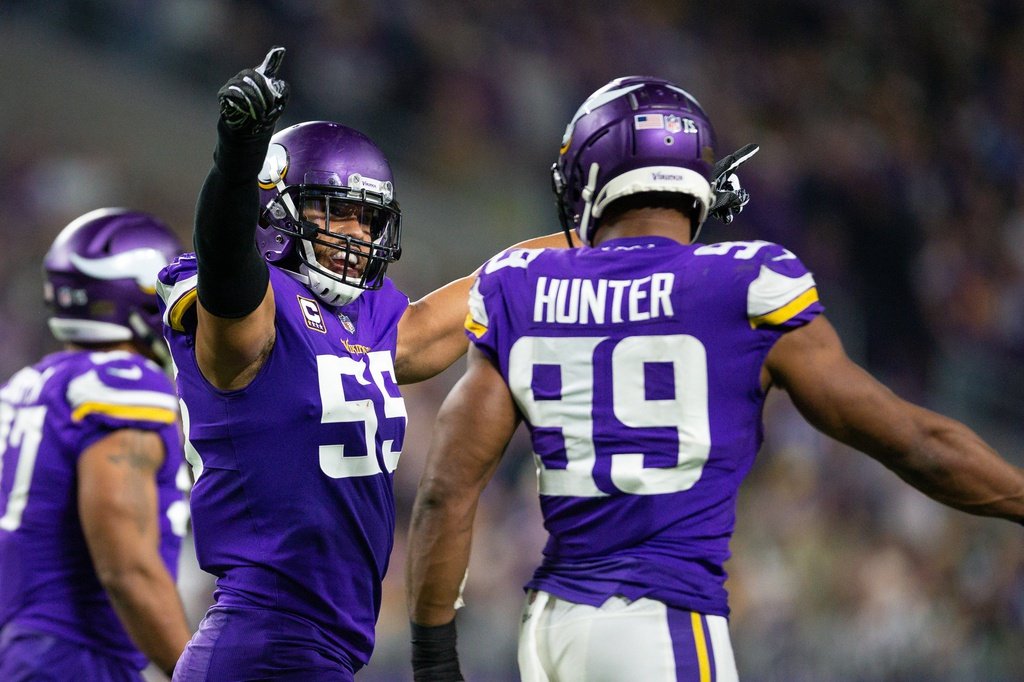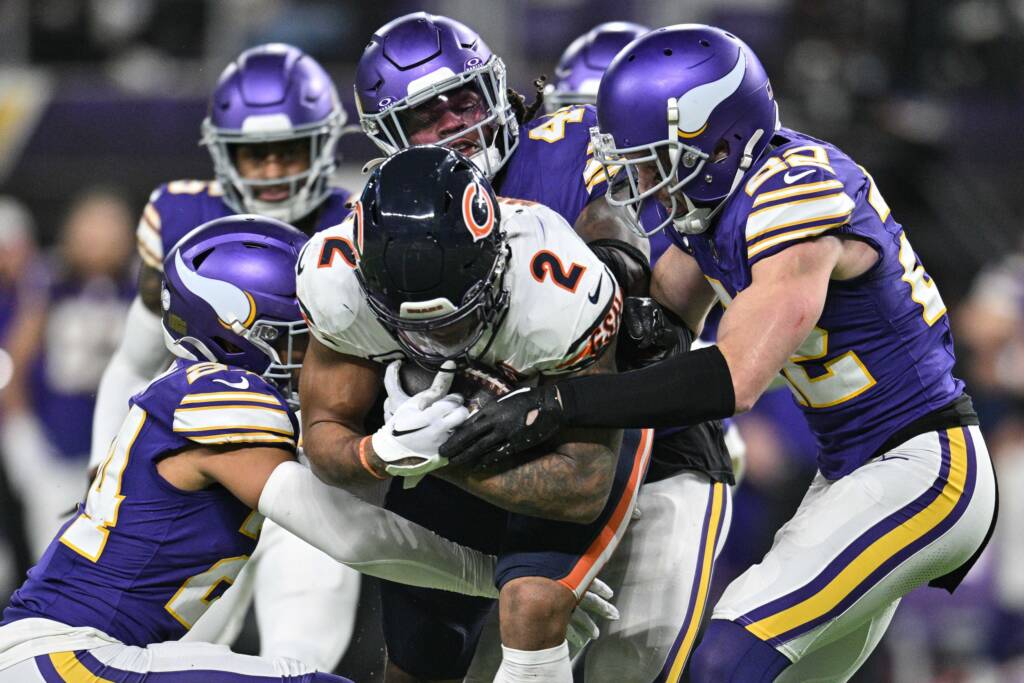It’s easy to get wrapped up in the fanaticism of free agency. Come March 15, the first day of legal tampering, headlines (and massive contracts) will fly. While we watch teams marry player after player, and fanbases get excited about their new toys, the Minnesota Vikings will stand pat. They’re a “second wave” team, meaning they wait out the hurricane of major contracts and pick up the value pieces that the big-money teams overlook.
Free agency can be a different thing to navigate for us laypeople. But if we follow these five simple bylaws, we can survive the anxieties of the first few days of NFL free agency. These aren’t rules for teams to follow, these are rules for fans to follow. Trust in the bylaws and enjoy a peaceful free agency experience.
The highest bidder isn’t the smartest bidder
NFL free agency is an auction market. Unlike traditional markets, the sellers (i.e. the players) are the ones choosing the price point. After all, they’re the ones choosing the bid. Players are interested in maximizing their value, either by inflating their salary or chasing other factors like weather, team quality, or coaching fit. That means that players will always choose their perception of the highest bid. Whoever values that player highest is awarded his services.
This creates an environment where every overvaluation is actualized. If you’re too high on a player such that every team disagrees with you, you now have to live with that overvaluation. How often is the team that is highest on a free agent the team that is also the most correct? There’s no shame in folding your cards in a bidding war. So if the Vikings get outbid for that prize player you’ve been dreaming about, it’s okay. There are other, better-priced fish in the sea. And all too often the value players are just as good as the big money players.
Focus on what The Vikings will ask him to do
We’ll call this The Brett Jones Lesson. Every coaching staff has different philosophies. Some teams use different schemes that ask players to utilize different skills. In New York, Jones ran in a lot of gap and power schemes. That means using pure beef to move players around. In Minnesota, they run a zone scheme, which entails deftly beating your assigned defender to a spot on the field. Jones is pretty good at the first thing. He’s not good at the second thing. Working power mechanics into zone plays is cumbersome, so the Vikings didn’t put Jones in until they were out of alternatives.
If you want the Vikings to sign Curtis Samuel, that’s great. But make sure you want him because of how he projects to the core principles of the Vikings’ scheme. In Samuel’s case, that seems pretty good. He ran a 4.3 40 and was fairly efficient deep, and his after-catch ability would serve Minnesota’s mesh and spot concepts well. But don’t think that Curtis Samuel brings Matt Rhule’s scheme with him. Evaluate the prospect of Samuel on what he would do in wide zone staples like Yankee, Mills, or Sail. For Samuel, that’s pretty exciting. For other deep burners like Kalif Raymond, not so much.
Everyone is a selfish negotiator, and that’s okay
Loyalty in the NFL is a nonexistent concept. NFL stands for Not For Long, as the old cliché goes. At a moment’s notice, a budding career can be chopped away in favor of a few dollars of salary cap space. This dynamic makes for a fairly straight-up negotiating environment. Players want to maximize their value, teams want to pay the minimum, and circumstantial leverage plays its role on one side or the other.
Negotiating dynamics can be fairly predictable. Absent leverage, if one party wants to pay $10 and the other wants to pay $8, most of the time they’ll agree on a $9 transaction. You wouldn’t expect the buyer to pay $11 out of the kindness of their heart, nor would you expect the seller to sell for $7. The same goes for players and teams. The “team-friendly” deal isn’t something to set your hopes on. It’s more scientific than it is interpersonal. A player trying to maximize their contract (like Danielle Hunter) isn’t a slight against his team or a sign of dysfunction. It’s all business.
Restructures aren’t pay cuts
This one is particularly topical with Anthony Barr‘s reported disinterest in a restructure. There are two kinds of contract adjustment that we typically refer to as “restructures.” The most common is a conversion from salary to signing bonus. This can be done with guaranteed or unguaranteed salary. When a player receives a signing bonus, they get access to that money immediately. So what could have been unguaranteed Monopoly money becomes money that is so guaranteed; it’s already in their pocket. This is the type of deal Eric Kendricks took in both 2019 and 2020. It’s not a contentious move, and it’s baked into all NFL contracts that players do not need to consent to it. After all, who would say no to a salary advance?
The second type of restructure is a pay cut in nice makeup. This is the type Riley Reiff took in 2020 and Latavius Murray took in 2018. When Barr says he is anti-restructure, he is likely talking about this sort of maneuver. The team will convert unguaranteed money to guaranteed money, but at a lower salary altogether. That Barr is not open to this is certainly informative. A salary-advance restructure is still a good idea with Barr, who has three years over which to spread some cap charges. Restructures lower the cap hit, but they aren’t pay cuts from the player’s perspective. It’s just an accounting trick to square things away with the NFLPA.
Your guy isn’t the only guy
There’s nothing wrong with having a free-agent crush. I’ve fallen in love with Curtis Samuel and Desmond King as efficient targets. But there are a lot of people who can fill those needs. Perhaps you’re in love with former New England Patriots guard Joe Thuney or Washington’s Brandon Scherff. If and when the Vikings miss out on those first-wave options, they’ll bring in someone else at guard (they mathematically have to).
Your free agent wishlist might look different from Minnesota’s. There’s nothing inherently wrong with that. Hundreds of players will hit free agency, and many of them are good. There’s a strong likelihood that NFL teams are high on a player you haven’t given any thought to. When the Vikings bring in new players, like or dislike those players on their own merits, not on the merits of someone else. Both your guy and their guy can be successful signings. Often, they are.
Follow these five simple rules, and your free agency experience can be fun instead of an anxiety-ridden Twitter nightmare. Apply patience, context, and a little bit of perspective to each headline and you’ll get out just fine.

